What is the Best Plastic to Use for A Greenhouse?
So you want to build your own greenhouse? That’s a brilliant idea for a project! A greenhouse provides an environment where heat and humidity can be maintained, making it possible to grow crops, flowers, and other plants that normally only grow in warm weather, even during winter.
If time and cost weren’t an issue, then the best option would be to build your greenhouse with glass or fiberglass walls. However, you probably can’t afford these types of materials, which is why you found your way to this article. Worry not – this detailed buying guide will help you pick the best plastic for your future greenhouse.
How do I pick a greenhouse plastic?
Not just any type of sheet plastic will do when you’re constructing a greenhouse. There are a couple of things to consider when choosing a plastic for your greenhouse, the most important of which we’ve listed down below.
1. Durability
The material of your greenhouse will be subjected to quite a lot of extreme conditions. It may need to endure torrential rains, strong winds, or heavy snowfall. Even direct sunlight isn’t exactly favorable to all plastics since a lot of them can turn brittle with constant UV exposure. A single tear on your greenhouse plastic can drastically reduce its effectivity, so investing in a high-quality plastic sheet made with the appropriate material will save you from a lot of future headaches.
2. Transparency
Greenhouses that are literally colored green are no longer common nowadays. In fact, the use of green-colored materials for a greenhouse is pretty much an outdated practice. In modern times, most growers have gotten the best results with materials that are as transparent as possible.
Take note that one of the objectives of a greenhouse is to allow sunlight to reach the plants so they can go through photosynthesis. This means that you would want as much sunlight as possible to go through your greenhouse walls. Transparency typically isn’t much of an issue when using clear fiberglass or glass panels but finding the right balance between transparency and thickness can be tricky if you’re using plastic sheets.
3. Weight
Although thick plastic sheets are stronger, they are also heavier. A plastic sheet provides no structural integrity whatsoever. This means that all of the weight of the plastic sheet will fall onto the frame of the greenhouse. While a heavy plastic sheet isn’t necessarily bad, just make sure that your greenhouse was built with the weight of the plastic sheet in mind.
4. Anti-drip and anti-dust properties
Depending on outdoor conditions, there could be several factors that could reduce the effectivity of your greenhouse. On cold days, the imbalance between the cold outer surface and the warm interior of a greenhouse could result in condensation forming on the inner surface of your plastic sheet. These condensate droplets could end up falling on your plants, disturbing the delicate ecosystem that you’ve so carefully crafted by promoting the growth of mildew.
Some plastics are naturally equipped to prevent this from happening. Plastic with a hydrophilic radical, such as -COOH (or carboxylic acid) helps prevent condensates from dropping onto the plants, instead retaining them on the surface to evaporate naturally. On the other hand, you would want to avoid plastics with hydrophobic radicals such as -CH groups, since they will repel condensate droplets.
Dust buildup can be an even bigger problem for a greenhouse, as it can drastically reduce the transparency of your plastic sheet. Some plastics naturally retain excess charge on their surface, which will make it so much easier for dust to accumulate on your greenhouse panels.
The best types of plastic for a greenhouse
1. Polyethylene
The industry standard when it comes to greenhouse plastic, polyethylene is cheap, accessible, and easy to repair. There are several different grades and copolymers of polyethylene. For best results, we recommend going for a brand that is explicitly labeled as ‘agricultural plastic’ or ‘greenhouse plastic’ as there are much more durable than the usual utility-grade polyethylene.
The downside of polyethylene is that it perfectly encapsulates the concept of getting what you pay for. It’s very inexpensive, but you’ll probably end up having to repair or replace your polyethylene sheets several times over the course of two or three years. If you’re on a tight budget and you don’t mind doing additional work every time your plastic sheet gets damaged, then polyethylene is your best choice.
2. Polycarbonate
Polycarbonate is a much more rigid, and also slightly more expensive, alternative to polyethylene. Most polycarbonate panels are made with a composite build: a single corrugated polycarbonate sheet sandwiched between polycarbonate sheets. With this innovative build, polycarbonate sheets provide excellent insulation, durability, and flexibility. If you can afford to line your greenhouse with polycarbonate panels, then you’ll greatly enjoy how low-maintenance this plastic option is.
3. Polyvinyl carbonate
Although very rarely used, polyvinyl carbonate (PVC) has also been a viable choice for greenhouse plastic. It’s extremely durable – enough to last more than five years with minimal repairs – but also significantly more expensive than the previous two plastic types. It’s also typically only available in shorter lengths, making it a challenging material to work with if you’re draping it over a large greenhouse.
The top 5 best brands of greenhouse plastics
1. Best overall: Macrolux Polycarbonate Greenhouse Cover
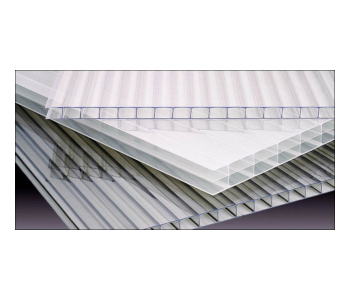
In terms of sheer performance, we’ll have to give the top spot to this polycarbonate sheet from Macrolux. Made with double-layer design, this panel is very rigid, which might make installation a bit more complex. Each panel measures 48” x 24” and can be cut down to size using a standard X-acto knife.
The Macrolux panels have been treated with UV protection, which should prevent them from getting brittle after prolonged exposure to sunlight. The double-layer construction not only makes these polycarbonate panels more durable and rigid but also provides a layer of air insulation which should help retain heat inside your greenhouse.
As expected from a polycarbonate panel, the Macrolux Greenhouse Cover is far from being the cheapest option in the market. If you’re sick of having to repair your usual plastic sheet all the time, then maybe it’s time to invest in the superior durability of this product.
2. Best value: Watershed Innovations Heavy Duty Greenhouse Tarp
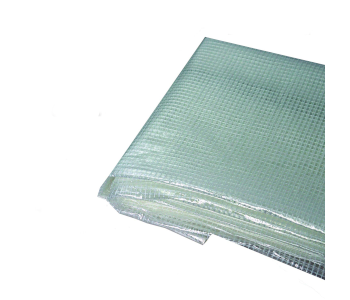
It’s hard to classify this product as a single type of plastic sheet as it seems to be made with a combination of different plastics. With a thickness of 10 millimeters, this tarp is much thicker than any standard plastic sheet.
The main matrix of the tarp is transparent, with enough area to allow substantial sunlight to shine through. A mesh weave that runs through the whole extent of the tarp greatly enhances its rigidity and durability without adding much weight or compromising its transparency. The edges of the tarp are heat-sealed, and the corners are double-reinforced to support rust-free aluminum grommets, that make installation of this tarp much easier.
While the tarp is initially strong enough to withstand heavy rains and strong winds, it does not seem to have received enough UV treatment to make it last more than 2 or 3 years. The good news is that this tarp is pretty cheap, so you won’t feel bad about having to replace it after a few years of good service.
3. Best budget: Sunview Greenhouse Clear Polyethylene Cover
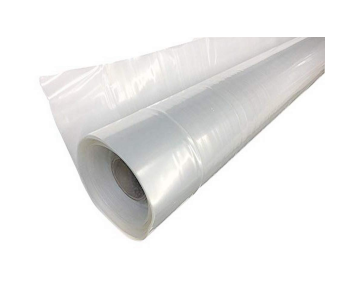
Cheap and simple, this polyethylene cover from Sunview looks nothing out of the standard but holds up very well in most greenhouse applications. The polyethylene material is thin (6 millimeters) but durable, allowing more sunlight to pass through and withstanding extreme weather conditions. It has been treated with an IR additive that helps reduce heat loss from inside the greenhouse and has also been treated with UV protection.
Keep in mind that polyethylene reacts slowly when put in contact with PVC. If your greenhouse has a PVC frame, make sure to treat it with primer before installing this plastic sheet.
Another thing to remember when installing a polyethylene plastic sheet is that it’s no polycarbonate panel or composite tarp. It will tear easily if the sheet gets snagged on some sharp object. As long as you’re careful with it, the Sunview polyethylene cover does a very good job of maintaining the heat inside a greenhouse.
4. Grower’s Solution Clear Plastic Film
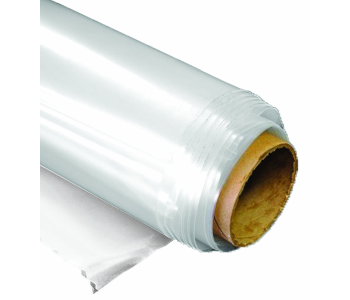
Strength can be a rare commodity when looking for a plastic sheet for your greenhouse, but this product form Grower’s Solution is tough enough for virtually all outdoor conditions. With its 6-millimeter thickness, it’s extremely tough and durable. The material is also capable of stretching by a small amount, which means that it can absorb sustained pressure without breaking.
A lot of greenhouse farmers have had a very good experience with the Grower’s Solution plastic sheet. It has very good transparency and can maintain an internal temperature that’s around 20 °C higher than the outside. It’s also quite easy to install – just take note that the film is labeled so you’ll know which side should be facing outside. Improper installation could result in the plastic sheet cracking prematurely due to UV damage.
That being said, this greenhouse film from Grower’s Solution is not perfect. It can rip easily with rough handling, and you can easily punch holes through it with any moderately sharp object. On the upside, repairing a clear plastic film is easy.
5. Farm Plastic Supply Clear Greenhouse Film
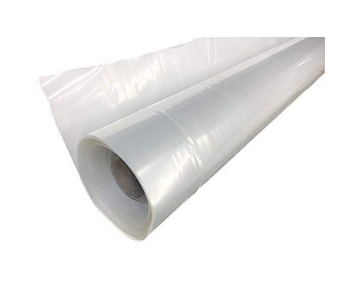
Telling several brands of clear plastic films apart can be a daunting task, but this greenhouse film from Farm Plastic Supply can be distinguished on one thing: how clear the plastic is. Instead of the translucent and borderline-opaque appearance of many other plastic sheets, the almost-clear appearance of this greenhouse film should let in much more sunlight for your plants and crops.
According to Farm Plastic Supply, the UV treatment of this greenhouse film should help it last up to 4 or 5 years. It may be a very light material, but it can withstand strong winds and moderate snowfall. Even if it does get damaged, one of the chief benefits of working with polyethylene is that it can be easily patched up.
If you’re looking for something cheap, light, and has exceptional transparency, then this greenhouse film from Farm Plastic Supply is certainly worth your consideration. Just don’t expect too much out of it, as it’s still just a polyethylene plastic sheet.
Final thoughts
While outfitting a greenhouse with glass or fiberglass panels is the vastly preferred method for the durability and transparency that they offer, not everyone is willing to go through all the work and spend large amounts for that method. Plastic sheets offer a much cheaper and easier alternative – just drape them over your greenhouse frame and secure them at strategic points.
Despite the apparent simplicity of plastic sheets, you still have to put in some thought into which type of plastic you’re going to use for your greenhouse. You can opt for the cheapest polyethylene sheets or splurge a bit for a polycarbonate panel that offers better longevity and rigidity. Either way, you’ll be spending much less than if you want the glass or fiberglass route.

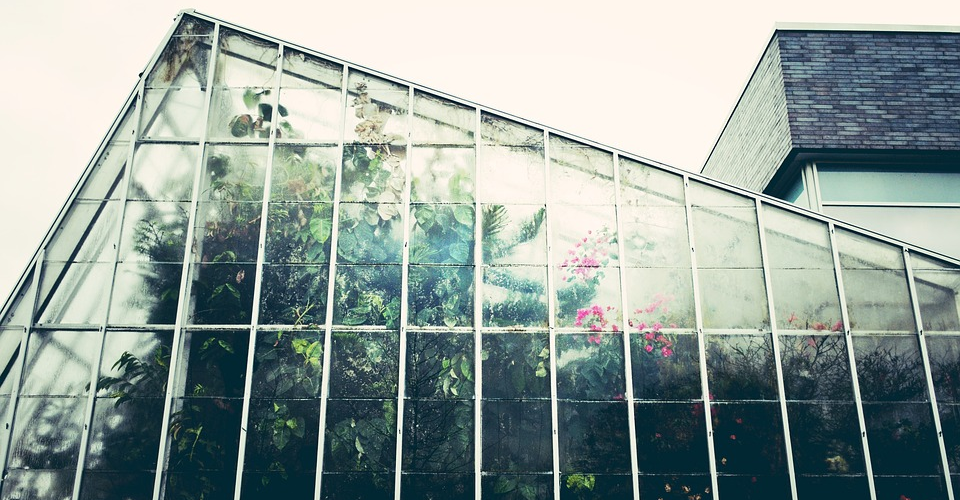
Amazingly, there are no comments. The article is nice and informative, just a comment on mm vs um – I really can not imagine a “film” of 6-10 mm. that’s a bit less than half an inch!
I have used a standard builders film of 100 um, which is 0,1mm, and it is already heavy and thick to touch, but alas, it most probably did not have UV protection, so after a heatwave and strong wind, almost tornado, my dome was ripped to pieces of plastic flying everywhere. The green film is expensive, I find, as here in Europe it costs around 8 EUR square meter! So for a noncommercial tomato grower it is very expensive. So I go for a standard cheepo to be replaced annually, or even more frequently, which in the course of the few years still would be cheaper than using an expensive solution that might never earn its cost.
You sae being cheated on cost Find a wholesaler or buy from Usa . We only pay less than $1 USD per square meter for 4 year poly film !
They don’t mean 6 mm or 10 mm. They mean 6 mil or 10 mil.
I’m trying build a green house and I live on my social security ,so I’m looking for the best way to go that will fit my budget
I used those big plastic storage containers to grow seeds I brought 2 long ones and my son came over he drilled 4 holes at the one side and tied wire type twist cables to open it up like a l_____ shape and drilled 2 holes at the other end to close it . seeds came on alot plastic containers is only £5/6/7 I brought 2 big deep ones to my son drilled holes in the lid .bottom and sides for ventilation it was well worth it I’m on fixed budgets to..